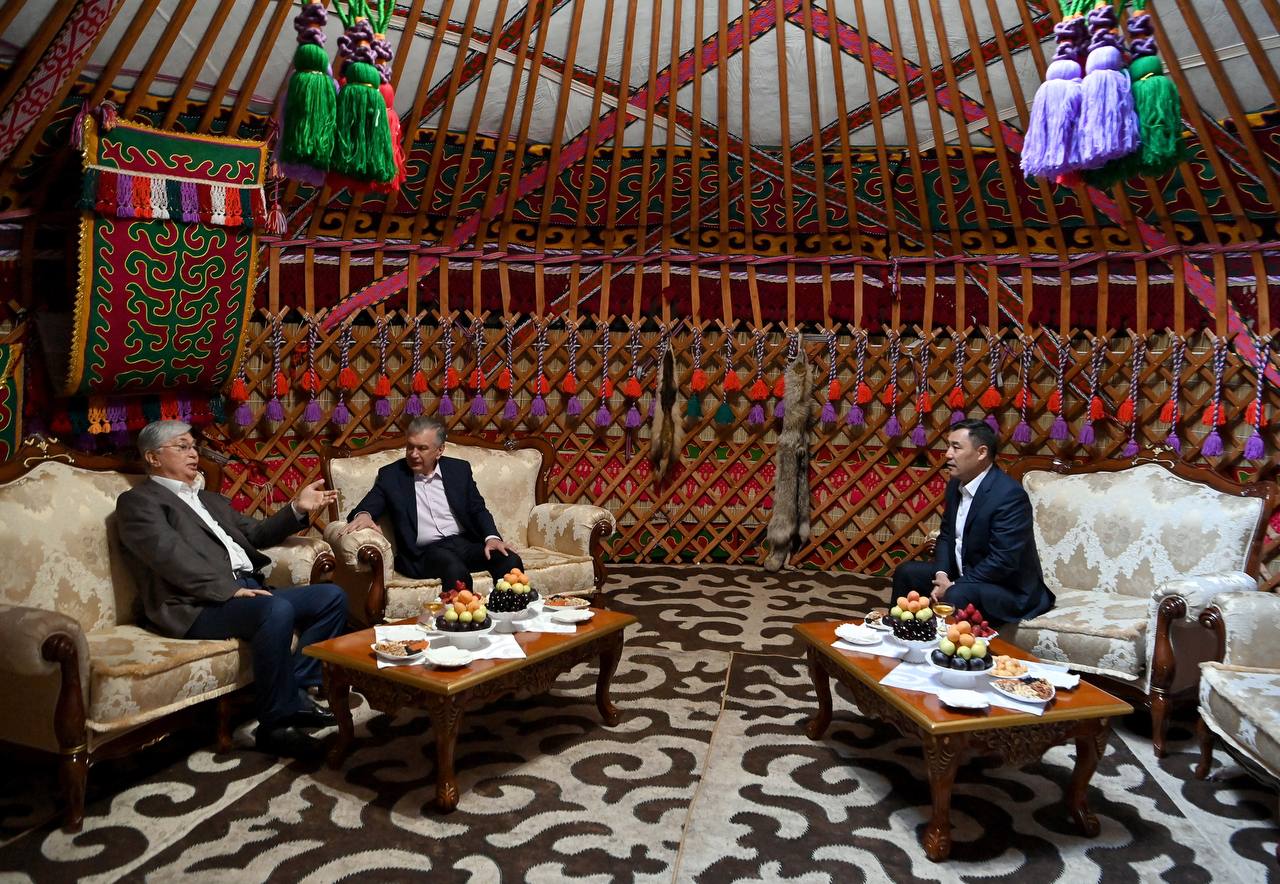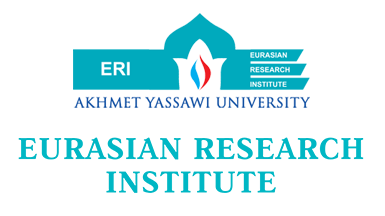
2022 has brought significant changes to world affairs. The Russian invasion of Ukraine shook the established order of world politics and became one of the most acute conflicts in Europe since World War II. The coalition of the so-called “collective West,” sanctions against Russia, the energy crisis in Europe, and the revision of world order all affected Eurasian affairs. Central Asia, having the longest land borders with Russia and being intertwined with deep economic and political ties, has redefined its importance in balancing the anti-Russian and anti-Chinese axis with the interests of the so-called West by instrumentalizing its multi-vector diplomacy. The paper discusses how Central Asia has taken advantage of geopolitical and geo-economic shifts in 2022 and how these developments changed the pivot of its external strategies.
In Central Asia, the year began with the January events in Kazakhstan, when mass protests turned into unrest and violence that shook the country with over 200 deaths [HRW, 2022a]. To normalise the situation, the Collective Security Treaty Organization’s (CSTO) peacekeeping forces were called, which for a short time boosted the popularity of the CSTO. In May, Tajikistan experienced an escalation of tensions and violence against a minority group in the Gorno-Badakhshan autonomous region. The worst unrest in Tajikistan since the civil war was put to an end by a special anti-terrorist operation that killed over 40 people and arrested many more [HRW, 2022b]. In July, mass protests occurred in Karakalpakstan due to the proposed constitutional amendments that might cease the autonomous status of Karakalpakstan. As a result of demonstrations that turned violent, dozens of people were killed, over 200 were injured, and hundreds were arrested [ODR, 2022]. A series of border clashes, with an escalation in September, happened in the Kyrgyz-Tajik borderlands, resulting in civilian deaths and injuries and infrastructure losses on both sides [Minzarari & Schmitz, 2022]. Hence, Central Asian countries themselves were busy maintaining stability and security in their countries. Noteworthy, despite different political agendas, dissatisfaction with socio-economic conditions was the primary cause of all conflicts.
The past year has also been notable for the growing cohesion of Central Asia. The war in Ukraine not only changed existing political conjecture but also led to a rethinking of the role of Central Asia in Eurasian affairs. Frequent gatherings of Central Asian leaders, intensifying bilateral and multilateral interactions, increasing attention to internal politics in Central Asia, and active attempts to diversify Central Asian partnership networks all speak to the heightening contribution of Central Asian states. Central Asian leaders met in a format of five in July in Cholpon-Ata, Kyrgyzstan, for the Fourth Consultative Meeting of the heads of state of Central Asian countries, where all stressed the importance of intra-regional alignment against the ongoing tensions [nCa Report, 2022a]. The SCO Summit in Samarkand in September demonstrated the growing status of the organisation when an intention for membership was made by Iran, Belarus, and Turkey [Muratbekova, 2022a]. The SCO Summit also emphasised the increasing political weight of Central Asia, which is crucial for balancing the interests of regional powers. The institutionalisation of the Conference on Interaction and Confidence Building Measures in Asia (CICA) into a fully-fledged organisation and holding the first summit as an international organisation in Astana in October further emphasised the diplomatic success and importance of Central Asia in implementing regional politics [Khitakhunov, 2022]. The Organization of Turkic States (OTS) Summit in Samarkand in November demonstrated an aspiration to strengthen Central Asian cooperation within the common Turkic heritage [inform.kz, 2022]. OTS’s past summit was also held for the first time as an international organization, where Central Asian states retained a central position. Hence, in 2022, Central Asia provided convenient platforms for gathering Eurasian leaders and emerged as an important actor in balancing the interests of regional players. Given the volatility of geopolitical and geoeconomic developments, past meetings were eagerly anticipated platforms for gathering major regional players around a single table.
Central Asia was also a focal point of cooperation under the “5+1” format. On the occasion of 30 years of diplomatic relations with Central Asian countries, Chinese President Xi Jinping, who launched the summit format with Central Asian heads of state in 2020, held a virtual summit in January 2022. Two days later, Indian Prime Minister Narendra Modi also hosted the first India-Central Asia Summit, held in virtual format [Muratbekova, 2022b]. In October, Russian President Vladimir Putin initiated the first Russia–Central Asia Summit, hosted in Astana [nCa, 2022]. In October, Astana also hosted the first EU-Central Asia summit, which was welcomed by the President of the European Council, Charles Michel, along with five Central Asian leaders [European Council, 2022]. In November, the OTS summit in Samarkand highlighted the ambitions of Turkish President Recep Tayyip Erdoğan to strengthen Türkiye’s influence in Central Asia through the strengthening of cooperation in the OTS format. Hence, against the backdrop of weakening Russian positions in Central Asia due to the Ukrainian war, the elevation of the 5+1 summits to the level of heads of state indicates the ambitions of regional politicians to capitalise on the geopolitical transformations and to advance their inroads into the region. Central Asian states, on the other hand, have demonstrated greater consolidation and the emergence of mature regional unity in the face of unprecedented geopolitical changes.
On top of that, the “5+1” format was applied by other regional partners at the ministerial level, such as the ministerial meeting with the United States on the sidelines of the U.N. General Assembly held in September [Tashkent Times, 2022]. The 15th South Korea-Central Asia Cooperation Forum gathered ministers of foreign affairs from Central Asia in Busan, South Korea, in October to enhance regional cooperation [Yonhap, 2022]. In December, the 9th Foreign Ministers’ Meeting of the “Central Asia plus Japan” Dialogue convened in Tokyo, gathering foreign ministers from Central Asia and Japan to deepen regional dialogue [MOFA, 2022]. Thus, in addition to utilising Central Asia’s geographic location and position as a tool of multilateral dialogue, regional leaders are keen to enhance the Central Asia+ format.
The sanctions against Russia facilitated the diversification and recalibration of Central Asian partners. Central Asian states increased their efforts to broaden their partnership networks, particularly with the countries of South Asia and the Middle East. This year, the UAE, Qatar, Iran, and Saudi Arabia emerged as key partners for Central Asian leaders. In particular, Presidents of Kazakhstan, Tajikistan, and Turkmenistan visited Iran during the year, emphasising the importance of boosting economic ties along with establishing alternative transportation routes; Presidents of Kazakhstan, Uzbekistan, and Turkmenistan had visited Saudi Arabia, which resulted in massive investment projects and bilateral agreements and later on Presidents of Kazakhstan, Kyrgyzstan, and Turkmenistan had visited Qatar during the year. In South Asia, Pakistan, reactivated its engagement with Central Asian states; Pakistani Prime Minister Shehbaz Sharif visited Kazakhstan and Uzbekistan, where he met with the Presidents of Kyrgyzstan and Turkmenistan on the sidelines of the SCO Summit; and Uzbek and Tajik Presidents visited Islamabad during the year.
The prominence of Central Asia in European politics was also reinforced by the European Union. Presidents of Kazakhstan and Uzbekistan had visited France, while German Foreign Minister Annalena Baerbock had visited Kazakhstan and Uzbekistan, which was seen as a signal of European support of Central Asia. China continued to enhance its strategic partnership with the region, as highlighted by Chinese President Xi Jinping, who made his first outbound visit since the pandemic to the SCO Summit in Uzbekistan via Kazakhstan, where he had an official stay. Turkish President Recep Tayyip Erdoğan has also stressed the importance of Central Asia in Turkish foreign policy, which was evidenced by his visits to Uzbekistan twice, Kazakhstan, and Turkmenistan.
Meanwhile, Russia actively participated in the politics of Central Asia. Amid Russia’s international isolation, Russian President Putin visited Tajikistan and Turkmenistan and attended summits in Kazakhstan and Uzbekistan. Central Asian leaders have repeatedly stressed their intention to comply with international sanctions while at the same time capitalising on Russia’s economic and political isolation. Despite predictions, Kyrgyzstan, Tajikistan, and Uzbekistan this year received a record amount of remittances from Russia related to the strong demand of the Russian economy [World Bank Group, 2022]. Central Asian leaders had also actively participated in Russia-led events such as an informal summit of the Commonwealth of Independent States (CIS) held in St. Petersburg in December [TASS, 2022]. At the same time, Russia’s aggressive policy this year has led to an increase in anti-Russian sentiment among the inhabitants of Central Asia, which has provoked aggressive responses from various Russian public and state figures. Central Asian governments were also treading carefully in response to anti-Russian sentiment in their countries, cancelling events featuring Russian public figures who supported the war and halting integration projects involving Russia. Nonetheless, the dependence of Central Asian states on Russia, such as Kyrgyzstan and Tajikistan, whose reliance on remittances primarily from Russia constituted 33% and 35% respectively of their GDP (in 2021), remain stable [World Bank Group, 2022].
The restrictions on Russian transit to European markets prompted a rapid diversification of major transportation routes in Central Asia, as well as the facilitation of the construction of new transit routes. It was also pushed by Russia’s temporary suspension of Kazakhstan’s oil exports via the Caspian oil pipeline, which transports more than 80% of Kazakhstan’s oil exports to Europe, or Uzbekistan’s reliance on Russian transit, since over 80% of Uzbek exports go through Russia [Kaleji, 2022]. As a result, Central Asian governments worked throughout the year to establish new routes in addition to the major transit Northern Corridor via Russia and the alternative Middle Corridor via the Caspian Sea. In particular, Central Asian states accelerated negotiations on the launch of the construction of the India-Iran-Afghanistan Chabahar Port Project [Jalilov, 2022], the Mazar-e-Sharif-Kabul-Peshawar Railway Project [inform.kz, 2022b], the Central Asian and the Persian Gulf transit corridors based on the Ashgabat agreement [Drishtiias, 2022], and the China-Kyrgyzstan-Uzbekistan Railway Corridor [nCa Report, 2022b], among others.
Central Asian states also intensified their intra-regional mechanisms for cross-border trade and initiated the creation of economic hubs in Central Asia. Kazakhstan is implementing projects on the border with Uzbekistan and Kyrgyzstan and discussing the creation of border special economic zones with them. Kazakhstan agreed with Tajikistan and plans to build a grain terminal with Turkmenistan [Kazakhstan Today, 2022]. Turkmenistan and Uzbekistan have begun construction of the Khorezm-Dashoguz border trade zone, while Uzbekistan and Tajikistan are planning to create a border trade and industrial zone.
Overall, fundamental geopolitical and geoeconomic challenges to Central Asian states’ development paths in 2022 have contributed to the dynamic modification of Central Asian strategies. Above all, the threat of aggressive Russian policy implications and an impending global recession has accelerated regional economic cooperation and strengthened Central Asia’s emerging unity. Other regional players have reassessed Central Asia’s strategic role in balancing Eurasian affairs in the midst of current geopolitical turmoil. Central Asia used the risks and opportunities of 2022 to facilitate the diversification of its transit potential by implementing its multi-vector policy.
References:
Drishtiias (2022). India, Turkmenistan Bilateral Meet. Retrieved from https://www.drishtiias.com/daily-updates/daily-news-analysis/india-turkmenistan-bilateral-meet. Accessed on 20.12.2022.
European Council (2022). President Michel visits Central Asia. Retrieved from https://www.consilium.europa.eu/en/european-council/president/news/2022/10/28/20221028-pec-visits-central-asia/. Accessed on 20.12.2022.
HRW (2022a). Kazakhstan: Joint Statement on January 2022 events. Retrieved from https://www.hrw.org/news/2022/07/29/kazakhstan-joint-statement-january-2022-events. Accessed on 15.12.2022.
HRW (2022b). Tajikistan: Tensions Escalating in Autonomous Region. Retrieved from https://www.hrw.org/news/2022/05/18/tajikistan-tensions-escalating-autonomous-region . Accessed on 20.12.2022.
Inform.kz (2022). Samarkand summit of the Organization of Turkic States: agenda and key decisions. Retrieved from https://www.inform.kz/en/samarkand-summit-of-the-organization-of-turkic-states-agenda-and-key-decisions_a4000629. Accessed on 20.12.2022.
Inform.kz (2022b). Kazakhstan ready to join construction of Mazar-i-Sharif-Kabul-Peshawar railway line. Retrieved from https://www.inform.kz/en/kazakhstan-ready-to-join-construction-of-mazar-i-sharif-kabul-peshawar-railway-line_a3957454. Accessed on 20.12.2022.
Jalilov, Orkhan (2022). Uzbekistan to Join Iran’s Chabahar International Trade Project. Retrieved from https://caspiannews.com/news-detail/uzbekistan-to-join-irans-chabahar-international-trade-project-2022-1-25-37/. Accessed on 20.12.2022.
Kaleji, Vali (2022). With Russian Route Blocked, Uzbekistan Looks to Indian-Iranian-Afghan Chabahar Port Project. Retrieved from https://jamestown.org/program/with-russian-route-blocked-uzbekistan-looks-to-indian-iranian-afghan-chabahar-port-project/. Accessed on 30.12.2022.
Kazakhstan Today (2022). Kazakhstan proposed to launch a network of border trade and economic hubs in Central Asia. Retrieved from https://www.kt.kz/rus/economy/kazahstan_predlozhil_zapustit_set_prigranichnyh_1377937000.html. Accessed on 20.12.2022.
Khitakhunov, Azimzhan (2022). The Sixth CICA Summit: Asian Vision of the Global Development. Retrieved from https://www.eurasian-research.org/publication/the-sixth-cica-summit-asian-vision-of-the-global-development/. Accessed on 20.12.2022.
Minzarari, Dumitru & Schmitz, Andrea (2022). Escalation in the Kyrgyz-Tajik Borderlands. Retrieved from https://www.swp-berlin.org/en/publication/escalation-in-the-kyrgyz-tajik-borderlands. Accessed on 20.12.2022.
MOFA (2022). The 9th Foreign Ministers’ Meeting of the “Central Asia plus Japan” Dialogue. Retrieved from https://www.mofa.go.jp/press/release/press4e_003197.html. Accessed on 20.12.2022.
Muratbekova, Albina (2022a). 2022 SCO Summit in Samarkand: Key Takeaways. Retrieved from https://www.eurasian-research.org/publication/2022-sco-summit-in-samarkand-key-takeaways/. Accessed on 20.12.2022.
Muratbekova, Albina (2022b). China’s and India’s Summits with Central Asia: Latest Developments. Retrieved from https://www.eurasian-research.org/publication/chinas-and-indiaa-summits-with-central-asia-latest-developments/. Accessed on 20.12.2022.
nCa (2022). First Summit of the Central Asian countries and Russia held in Astana. Retrieved from https://www.newscentralasia.net/2022/10/16/first-summit-of-the-central-asian-countries-and-russia-held-in-astana/. Accessed on 20.12.2022.
nCa Report (2022a). Fourth Consultative Summit of the Leaders of Central Asian States in Kyrgyzstan laid out a joint vision and multiple initiatives on better regional aligning against external shocks. Retrieved from https://www.newscentralasia.net/2022/07/22/fourth-consultative-summit-of-the-leaders-of-central-asian-states-in-kyrgyzstan-laid-out-a-joint-vision-and-multiple-initiatives-on-better-regional-aligning-against-external-shocks/. Accessed on 20.12.2022.
nCa Report (2022b). China-Kyrgyzstan-Uzbekistan railway project steps closer to reality. Retrieved from https://www.newscentralasia.net/2022/11/29/china-kyrgyzstan-uzbekistan-railway-project-steps-closer-to-reality/. Accessed on 20.12.2022.
ODR (2022). A guide to the violent unrest in Uzbekistan’s Karakalpakstan region. Retrieved from https://www.opendemocracy.net/en/odr/protests-karakalpakstan-uzbekistan-former-soviet/. Accessed on 20.12.2022.
Tashkent Times (2022). C5+1 format meeting held in New York. Retrieved from http://tashkenttimes.uz/national/9672-c5-1-format-meeting-held-in-new-york. Accessed on 20.12.2022.
TASS (2022). Informal summit of CIS leaders kicks off in St. Petersburg. Retrieved from https://tass.com/politics/1555965. Accessed on 20.12.2022.
World Bank Group (2022). Migration and Development Brief 37. Remittances Brave Global Headwinds, Special Focus: Climate Migration. Retrieved from https://www.knomad.org/publication/migration-and-development-brief-37. Accessed on 13.12.2022.
Yonhap (2022). S. Korea, 5 Central Asian nations discuss cooperation in Busan forum. Retrieved from https://en.yna.co.kr/view/AEN20221025004051325 . Accessed on 20.12.2022.
Note: The views expressed in this blog are the author’s own and do not necessarily reflect the Institute’s editorial policy
Albina Muratbekova
Senior Research fellow
Dr. Albina Muratbekova is a research fellow at the Eurasian Research Institute of Akhmet Yassawi Kazakh Turkish International University. Albina holds a PhD degree in Oriental Studies from Al Farabi Kazakh National University. During her studies, Albina received fellowships from institutions in China, India, the USA, the UK, Germany, and Switzerland. Her primary research interests cover Central, East, and South Asian affairs; intraregional and interregional cooperation of Central Asian states; China-India relations; and Central Asian politics.

